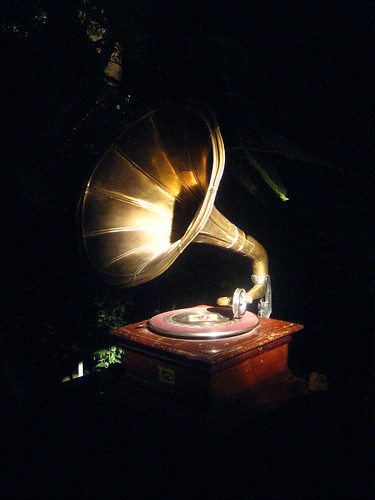Just look at this for a moment:
Beautiful, isn’t it? The first gramophone was invented in the 1870’s by none other than Thomas Alva Edison (yes, the same man that invented the light bulb and the motion picture camera). Back then, it was only an attempt to play back previously recorded telegraph messages. But from that point in human history until the 1980’s, the turntable experienced an unprecedented rise until it became the center of the music market, used for both professional and consumer purposes. It became an icon that is still present in our collective consciences, some 20 years after it was replaced from mainstream use.
Then along came the CD, and people discovered the wonders of the digital sound. As hard as it may seem to believe today, the transition between the two formats was far from easy. Analog technology was in place everywhere and the CD simply couldn’t compete in costs with vinyl LP’s yet. Besides, there was the human factor: we don’t like change. We never have, and this was probably as big a change as the music industry has ever experienced. People started complaining that new CD recordings sounded weird. The warm, familiar sound of their old LP’s was gone, and they didn’t like it one bit.
What was the deal? Today it seems obvious that a CD sounds better than a vinyl record, so what happened back then? Theoretically, there is nothing that keeps a vinyl record from sounding better than a CD. They do have a wider frequency response (the range of frequencies they can play), so in theory a new vinyl record played by a high-end turntable should sound better. Well, not quite.
You see, while vinyl records do have a wider frequency response, it is not flat, which means than not all frequency components are played at the same level of intensity. Our hearing is also not flat for all frequencies, so any mismatch between both frequency curves may result in audible differences when compared to a live performance. Add to that the mechanical noise and distortion that the stylus introduces and you get the listening experience that people identified as “warm”. Compared to that, audio CD’s play music with a frequency response that, while inferior to that of high-quality vinyl records, still generously covers all of the hearing spectrum, which ranges from 20Hz to 20KHz. The rest of the spectrum captured by vinyl records not only isn’t audible, but it can actually cause interference and distortion in the audible range. 1
As a result of these differences the listening experience changed dramatically and, while the CD theoretically offered a better sound quality, people found it lacking depth and musicality, and often described it as sounding metallic. Early audio CD’s were also affected by poor analog to digital conversion processes, which hindered the final quality of the sound, mainly due to aliasing of higher frequencies.
Why am I writing sooo much about this stuff? Well, because I believe there is an important lesson hidden somewhere here: Technology may be great, but it’s only great if it serves a purpose. The list of great devices that were huge commercial failures is long, and it’s usually because at some point those devices lost track of their purpose: why do people need this? Or, more importantly, do they need it at all?
These devices are not just feats of engineering and design, they need to make our lives easier or more enjoyable. If they don’t, they will almost certainly fail. The problem with the CD was that many people were unpleasantly surprised by the new format and the dramatic change it introduced in their listening experience. If it were not for the tremendous savings and convenience that digital technology brought to the music industry, it is unclear whether the CD wouldn’t have gone the way of the Dodo.2 It took a few years for the MP3 to make its way into the market, and that’s a format that is incredibly convenient and efficient compared to the CD.
The point is: don’t give me technology, give me solutions. Don’t tell me what this is made of, tell me what it can do. Can you think of a company that designs and markets its products this way? And how’s it going for them lately? Not bad?
I wonder why that is.
We are analog beings.
-
Most amplifiers and speakers have a marked non-linear behavior outside of this range, which contributes to the distortion.]. Besides, a CD’s frequency response can be perfectly flat, which provides an even higher fidelity to the original recording.↩
-
The list of devices arguably better than the CD that failed to replace it during the last decade is also long: MiniDisc, LaserDisc, even Audio DVD's…]↩
